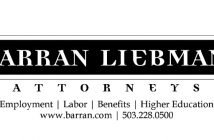This series of articles is directed toward the entrepreneur or business and is focused on products as opposed to services. The goal of this series is to provide you with the background needed to bring your idea from wild thought to a product ready for market.
The writer has over 30 years experience in industry and product development, is a member of the Board of Directors of Inventors North West and is a member of the Product Development Management Association. He has a BS in engineering, an MBA and is a certified 6 sigma Black Belt. He is a principal in a Bend firm that provides machine design, product design and development services (www.herrickprodev.com). His email contact is john@herrickprodev.com.
Article IX: Production and Product Quality
It has taken you many months, a lot of work and a supply of cash to get your idea to this point. All of the pieces come together now and hopefully (as I’ve harped on) your entire development process has been aimed at producing a high quality, cost effective and reliable product. The production process is typically a set of defined and prescribed processes.
It is vital that this process be fully documented and controlled. If your chosen manufacturer does operate under a specific quality system, they will have these documentation and control systems in place. You will want to verify this. You can do so by either auditing their systems yourself or hire someone to do it for you. What are you looking for in their quality system? In general you are looking to see if their processes (which are now producing your product) are documented and if they do indeed follow those processes.
How do you know if they are adhering to the processes as they have them documented? You audit them. They must maintain records to prove their adherence and furthermore, those records must be backed up by proof. For example, I believe that we talked previously about the requirement for your manufacturer to retain the “first off” part from a given production run. This “first off” part is to always be available for inspection and as a means of proof that this production run did indeed produce that part (and would continually produce that same pedigree of part).
Now, you certainly do not have the right, as a customer of this manufacturer, to examine other customers’ products, but you certainly have the right to examine any processes upon which your product is to be made.
I have done a number of supplier audits in which I was focused on that manufacturers’ production process. I typically work the process backward. I want to see the first off part (s). Then I work back up the production process looking that each step is documented and controlled. What does “controlled” mean here? Does it mean that armed guards and flashing lights are present to ensure that no operation is done incorrectly? Although you might wish for that sometimes, it is not the case. “Control” in this instance means that (A) the process is designed such that parts cannot be made incorrectly as a result of specific mechanical or electrical verifications inherent to the process and (B) control plans exist that define a process for addressing improperly assembled or out-of-specification parts. There is a lot more involved here than the simple description I have concocted, but it should give you the idea.
You have contracted with this company to make your product (or parts of it). It is their job to make it as you have defined it. It is their job to have in place processes that insure this. They can make no changes to your product or processes without your knowledge and approval. Your job is to “trust, but verify”. If you do this, and you have a conscientious supplier, you will have consistent product going out the door.
Now, will there be problems? You bet there will be. Sub-suppliers will have production problems of their own potentially shorting your manufacturer. Bad sub-parts will show up at the receiving dock. Hopefully, they will be caught before they make it to the manufacturing floor. If not, the well designed and controlled manufacturing methods will catch the badness well before it gets out the door and certainly before any complete assemblies are finished.
Depending on the severity of the boo-boo, the manufacturers’ quality systems can deal with it on the spot and continue making your product. In some instances, you will be notified and will need to make a decision. And, even in the best quality systems poorly manufactured parts will leak out the door. Your last line of defense will once again be the manufacturer”s quality system. In that quality system should be a lot, batch or serial number tracking mechanism. Having that information for the bad product that escaped will allow the manufacturer to isolate the extent of the problem and limit the amount of damage done.
Lastly, let me highlight some of this with a personal experience. The product was a safety-critical injection molded plastic part. This part was provided by an outside molder. A sample of 32 production parts were put through a complete set of well-designed product validation tests. All 32 parts passed all of the tests with a margin of safety. The part then went into production and was shipped out to customers as part of a larger assembly. After some months, reports began coming in from the field of broken parts.
Remember that this was a safety critical item and breaking is bad. We examined failed returned parts. The area where the part fractured had an odd appearance to it which led us to believe that there was some form of contaminant in the plastic or that the plastic had been subjected to something different during molding.
We went to the molder and had them verify the raw plastic resin batches and at the same time performed a new series of tests on another set of 32 parts from the latest production run. Well, guess what? A number of these “new” parts broke at a force less than what was specified (and less than what the original 32 production samples had failed at).How could that be? We ran the trap line back upstream and looked at the processes used in the actual molding of the parts. Yes, they were all documented.
We then quizzed each of the molding machine operators who had made these parts. Had they noticed anything odd from one group of parts to the next? Of the three operators, two of them had noticed nothing out of the ordinary. The third operator was a different story. He noticed that parts looked a little dull. He adjusted the molding temperature until the parts looked better to him. Plastics are funny things. If you get a molding process tuned in to create good parts, you leave it alone. If you raise the temperature at which they are molded, you will often arrive at a point where the parts get brittle (the plastic is overcooked).
A few more experiments with molding temperatures confirmed the diagnosis. The operator had all of the best intentions. He wanted the parts to look nicer. Unfortunately the result was a failed part and a $1 million field campaign. How did we fix this? We added another level of control. Audit records of the molding machines’ settings were required more frequently and a special break test fixture was installed at the molding press with the requirement of the molder that 30 parts from each production run be tested to failure and the results provided to us prior to our acceptance of the parts.
This concludes our series of articles on product development.
John Herrick, Jr. can be reached 503-799-3580, jhunterh2001@yahoo.com. He is a principal in a local design and product development firm (www.smithherrick.com). The company’s focus is on electro-mechanical design and product development.




